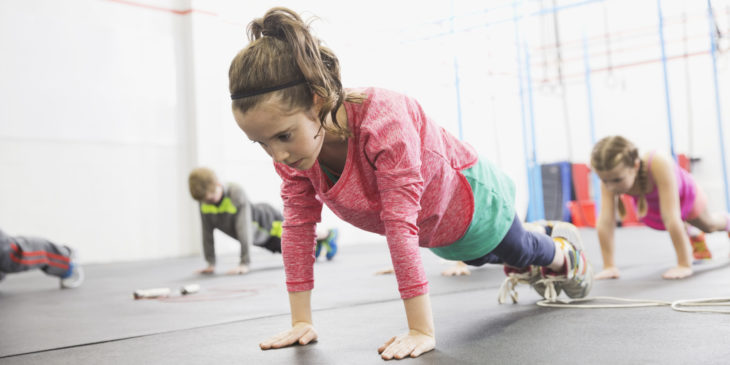Children in sports have always been a controversial topic of discussion and a cause for condemnation and envy. This is especially true when the child really has talent and potential. However, to what extent are serious athletic loads safe, especially when weight and amplitude increase? Of course, your child can do a lot of strength exercises using his own body weight, small barbells or an adjustable weighted vest. However, do not forget about reasonable precautions.
The Scientific Justification

Img source: self.com
Thirty years ago, there was a ban on weight training before reaching physical maturity in Europe and the USA. So, in 1990, the American Academy of Pediatrics gave such official recommendations for joining children in power sports. The ban was based on high injury rates during youth competitions in these sports. Since then, sports doctors have developed age-appropriate exercises for safe training of children. At properly conducted power programs the risk of injury is lower than in many popular youth sports: football, basketball, volleyball.
The Modern Approach
The current WHO recommendation is that children and adolescents from five to 18 years old are not forbidden to take part in muscle building exercises. Three classes per week are recognized as an acceptable norm, which is still not necessary to exceed. When using weights, training should be conducted only under the supervision of a qualified instructor. As before, it is not recommended to raise the maximum weight until physical maturity is reached (usually around 16 years old).
Children and a Weighted Vest

Img source: thedacc.com
- When wearing a weighted vest, it is very important for children to be careful. For example, some tools (especially the most massive) exert excessive pressure on the lower back and shoulders, so that during long walks or exercises that involve the muscles of the upper body, such as pushups or pull-ups, problems may arise at the bottom back and shoulders, diaper rash on the skin and even joint injuries.
- Before the child begins to do exercises with a vest, it is necessary to get the advice of the orthopedist, traumatologist and sports instructor. It is necessary that the child already has experience with dumbbells and other weights for arms and legs.
- Choosing a vest, pay attention to the weight that it gives, the material from which it is made, the ability to increase the weight gradually and the convenience of wearing it. Be sure to ask your child to try on and test the vest before buying. The vest should not cause discomfort sensations except the effect of weight gain.
- In addition, especially exhausting workouts can be accompanied by overheating of the body and oxygen starvation, as often vests are made from heavy, impermeable fabrics such as nylon and neoprene. It is necessary to remember this and ask a child to make pauses and breaks. A vest with weighting is a great way to increase the complexity of the workout, but everyone needs to remember about the state of the body and the signals it sends.
